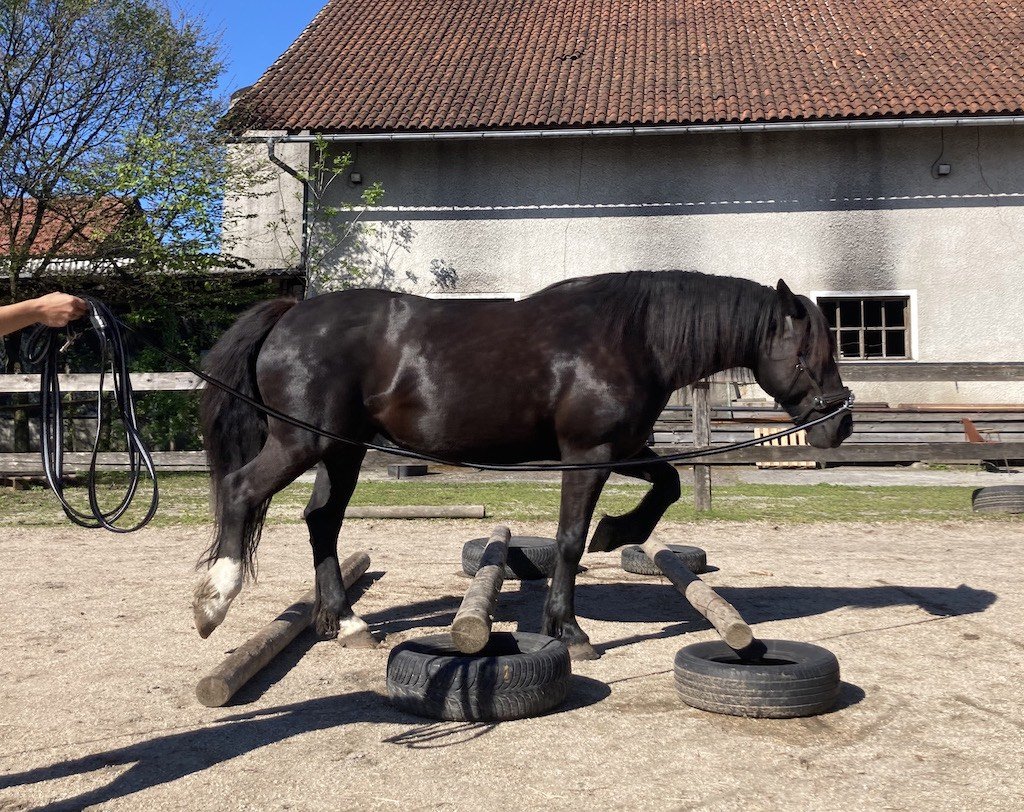Why cavaletti in walk is pure gold
Cavaletti in walk is way more than just an easier version of cavaletti in trot.
Among recommendations for strength training and gymnasticising horses we often see cavaletti work. But the thing is, cavaletti enables us such a broad range of exercises and horses can tackle them in so many (both healthy and unhealthy) ways that just saying do cavaletti work with your horse is nowhere specific enough to actually give you any useful information. Cavaletti, when done right, is a wonderful tool to strengthen and supple, but when not done right, it can cause a lot of harm.
One thing that's really important to understand is that walking over cavaletti is totally different from trotting over them. So, thinking that walking over cavaletti is just an easier version of doing the same thing in trot, is dead wrong. In trot, the horse relies on elastic energy stored in his fascia and tendons to move his body over the poles, all the while keeping his spine stable by using the spinal stabilizers more. This enables him to conserve energy and reduce muscular effort. In walk, the story is different. Because the movement is slower and there is no moment of suspension, the horse can't rely on elastic energy stored in connective tissue as much, so he has to use more muscular power to produce movement. The lack of suspension also means that the spine doesn't have to be as stable, so the stabilizers aren't working as hard. Because each leg moves individually (the walk is a four-beat gait), the spine has a greater range of motion.
This means that we can accomplish very different things depending on which gait we choose to work over cavaletti. I personally am a big fan of working over cavaletti in walk, simply because I find it to be a wonderful exercise to re-programme the nervous system, strengthen the thoracic sling and increase the range of motion of the spine. While walking over cavaletti in a correct posture, the horse has to lift up through the thoracic sling if he wants to see where he's going while also lifting up the front legs to clear the obstacle. Lifting each individual leg higher than usual creates gentle axial rotation and lateral flexion of the spine, which has a very beneficial effect on the long back muscle as well as the thoracolumbar fascia. And anything that effects the fascia, effects the nervous system as well, so cavaletti is very useful for creating new, healthier movement patterns.
In this sequence we can clearly see how the mare’s posture changes as she walks over the obstacles. She lifts up through her thoracic sling, activates her core and recruits the muscles of her hind legs.
We can only access all of those benefits if the exercise is performed correctly. The horse has to be walking in a relaxed, energetic (but not rushing) walk, and his head and neck have to be free to move however the horse sees fit. If the range of motion of the head and neck is limited by side reins or any other contraptions, he won't be able to find the best position to move his body over the obstacles. If the horse chooses to tackle the cavaletti by throwing his head up and pulling his front legs over the poles with his lower neck muscles, while stiffening up the back, he is not ready for this kind of work and we need to take a step back. The distance between the cavaletti has to be adjusted to the horse's gait, so he doesn't have to shorten his stride or make it too long. If the rhythm of the movement is disrupted, he will react by hollowing his back, which we don't want. The distance of 80-90 cm will suit average sized horses, but this is just a general guideline.
The benefits of walking over cavaletti will depend on how the exercise is done. Correct posture is key here.
Even though walking over cavaletti is a gentle exercise, it is a very demanding one for a horse in re-training, so never do too many repetitions. Every exercise that targets the nervous system and aims to create new movement patters, should not be overdone. Working over cavaletti for 10 minutes (with breaks in between), is plenty of time for the horse to reap the benefits.


